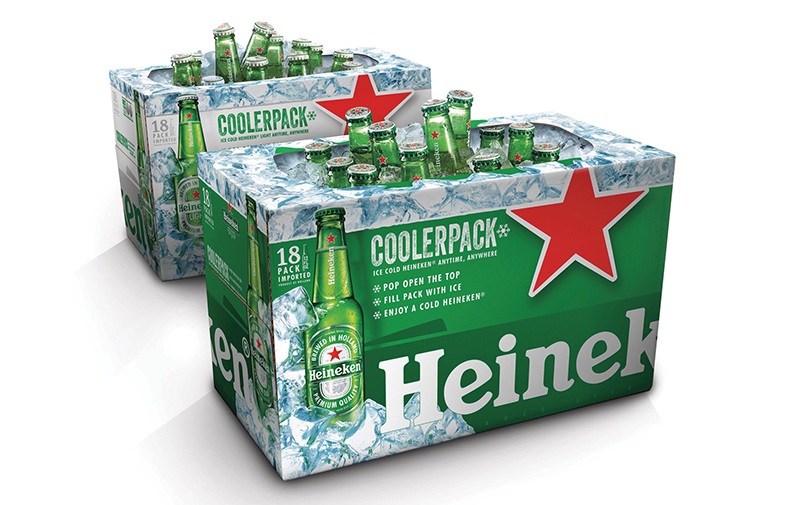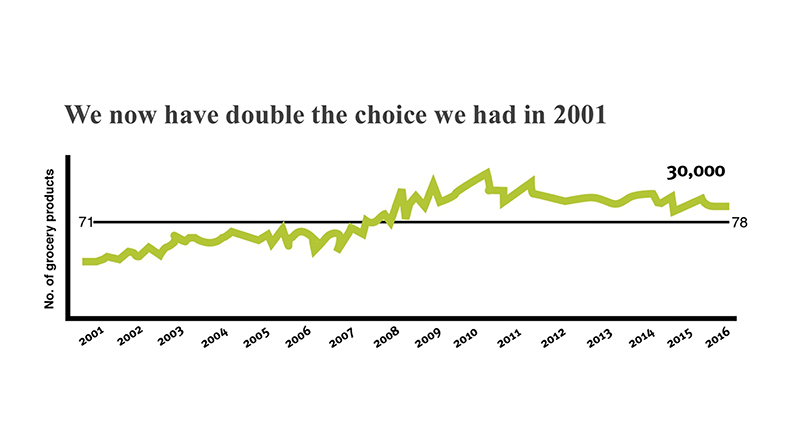 While most people don’t like shopping, it is a well-established fact that a happy shopper is more likely to spend more in-store and one who is not. So, how do we make shopping a happy experience, asks Sarah Love?
While most people don’t like shopping, it is a well-established fact that a happy shopper is more likely to spend more in-store and one who is not. So, how do we make shopping a happy experience, asks Sarah Love?
A happy shopper is more likely to spend more Happiness is… ‘What do you actually do? The ultimate question for a marketeer and one I’ve often been asked. How do you explain, especially to those not versed in marketing-speak? In general terms, we’re given a brief and, whatever medium we use, we try to affect consumers. But the point at which the ‘Line’ comes in isn’t clear to me and, I imagine, many others.
I think a good way to explain ‘Above’ the Line’ versus ‘Below the Line’ is to say that ‘Above’ affects people’s attitudes and ‘Below’ affects their behaviour. Are you tasked with changing how people think or how they act?
Ultimately, it has to be both. Everyone in marketing is in the business of increasing sales, however we define our role. Recently I’ve had a clear insight into what it is that we do:
We make shoppers happy. It’s very simple really, with two key elements: shoppers and happiness.
Just think about the quantity and quality of information marketeers know about our target consumers. Lifestyle, values, brands they consume, attitudes to life and family… the list is endless. But how much time do marketeers spend really thinking about shoppers? How much time is devoted to real shopper understanding?
And I’m talking about REALLY knowing shoppers… not just knowing their data.
In an era of Big Data, don’t be misled into thinking that access to statistics is the same as knowledge. In fact, this mass of information can cloud our judgement and get in the way of real understanding.
Think about the reams of data that’s available to us through basket analysis, for instance. This data tells us a lot about what’s purchased, it doesn’t tell us how the basket was shopped.
It tells you what people bought, but not what they didn’t buy nor what they wanted to buy but couldn’t find. It doesn’t tell you what they bought in another store, what was going on in their head when they were contemplating buying a particular brand or product, or whether they went somewhere else to buy it, a discounter maybe. It doesn’t tell you how they were feeling when shopping in a particular category or buying a particular brand, or why they didn’t buy a particular brand. It doesn’t tell you what they didn’t buy in store, then went on to buy later online, or if their purchase decision was prompted by an earlier online search.
At goosebumpº, we tell our clients, and ourselves, to get out and about into shoppers’ shoes. Go and experience what it’s like for a shopper, on a specific shopper mission, and then see how much better informed you are.
This gives you real shopper understanding and it doesn’t come from data alone. It comes from a real interest in knowing your shopper and in taking the time to get to know them.
It moves you beyond what they buy to why they buy.
Just this week I saw on LinkedIn a great and simple – great is often simple – piece of work that clearly demonstrates Shopper understanding. Heineken has just launched the ‘COOLERPACK’, an 18-pack format that lets shoppers chill their beer by simply removing the top of the pack and adding ice. This is driven by the knowledge that most Shoppers buy on their way to an occasion and that 75% of beer is purchased to consume within the hour.
I love this example, because it shows how simple it is to get shopper understanding. And you can see how that understanding can drive sales.
So now you understand your shopper, how do you go about making them happy?
Let’s be clear, when I talk about making shoppers happy, I’m not talking about roadshows and bands and cafés and crèches for kids. What I’m talking about is much simpler: making sure that you and your brands offer the right solutions for your shoppers in the right part of the store, at the right time of the day, in the right format, at the right price.
Shopping is a time-consuming and costly business. It’s a chore that must be completed on a regular basis. Making it more pleasurable simply means helping shoppers find and buy what they want.
Over the last 20 years, we have simply made shoppers’ jobs harder by inundating them with choice.
With over 30,000 SKUs on sale in an average grocery retailer in Ireland, Shoppers spend more time cutting through the clutter of what they don’t want than selecting what they DO want. In fact, only 10% of a shopping trip is spent in active selection, with 90% spent navigating. Easy shopping needs to be our priority: helping Shoppers find what they want.
Happiness for shoppers means finding what they want, at a time and price they’re happy with. And the great news is that happy shoppers spend more.
TNS’s global database of Retail and Shopper studies shows a clear correlation between Shoppers’ satisfaction and the amount they spend.
At a time when brands and retailers face a shared growth challenge, the value of this insight is greater than ever before.
Start putting shopper satisfaction at the top of your agenda and you will reap the rewards.
So, what is it we actually do? We make shoppers happy… and help, encourage, inspire and educate them to make better shopping decisions that ultimately drive sales for our clients’ brands.
Forget the ‘Line’. Isn’t this what we should all be doing?
Sarah Love is managing director of Goosebump, part of the DDFH&B Group. In association with APMC.
First published in Irish Marketing Journal (IMJ May 2017)© to order back issues please call 016611660
























